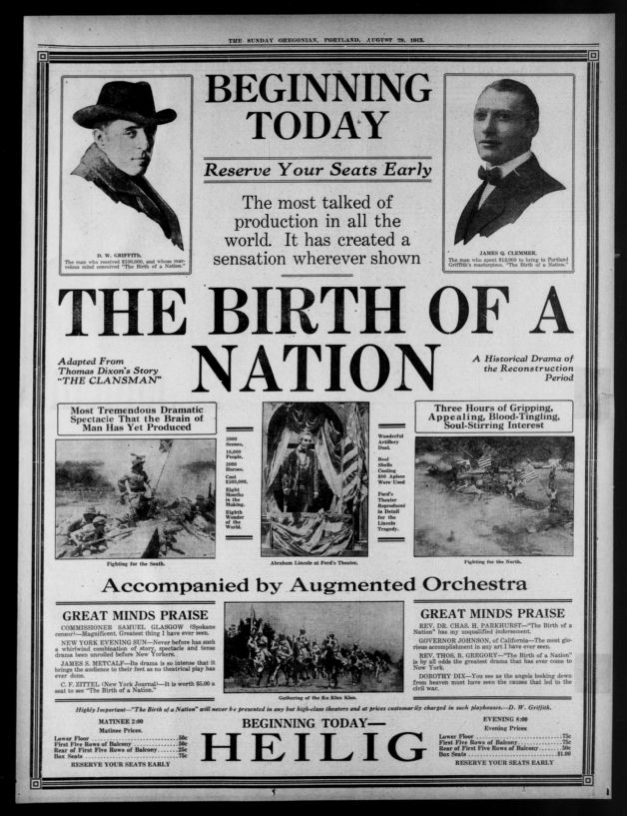
This newspaper advertisement is for The Birth of a Nation by the renowned director D. W. Griffith. This advertisement was published by the Sunday Oregonian in Portland, August 29, 1915. This would mean that the film had been released seven months prior to the publication of this paper, though still within the same year of 1915. On the top right of the ad you can see a box with a picture of a man named James Q. Clemmer. Under the picture it states that Clemmer was the man responsible for spending a whopping $12,000 to bring “Griffith’s masterpiece” to Portland. To give you some context on how much Clemmer would have spent nowadays, $12,000 in 1915 would roughly be equivalent to about $280,000 in 2018. From what I can gather from this ad, Portland would have been the first city in Oregon to have had access to the original film. The ad also gives this away as it states towards the bottom that The Birth of a Nation will not be presented in “any but high-class theaters”, which was quoted directly from D. W. Griffith himself.
Unlike most of the ads I have seen in this class this one really stands out to me. I have not yet seen a film or theater advertisement that has taken up the entire page until this one. The font for that reads the film title “The Birth of a Nation” immediately grabs your attention. The smaller print on top of the title emphasizes the appeal for this film – “The most talked about production in all the world. It has created a sensation wherever shown”. At this time there was nothing quite like The Birth of a Nation, so it would be hard to relate this to any genre films back then. The only hint we get of putting this film in a genre from the ad is on the right below the main title. It considers it a historical drama, and in the box below it claims to be blood-tingling, gripping and soul-stirring. Not only does the description grab your attention, but the ad also includes impressive details about the production of this film, such as having 5000, scenes, 18,000 people and a cost of $500,000. It even states that it had 3000 horses.
